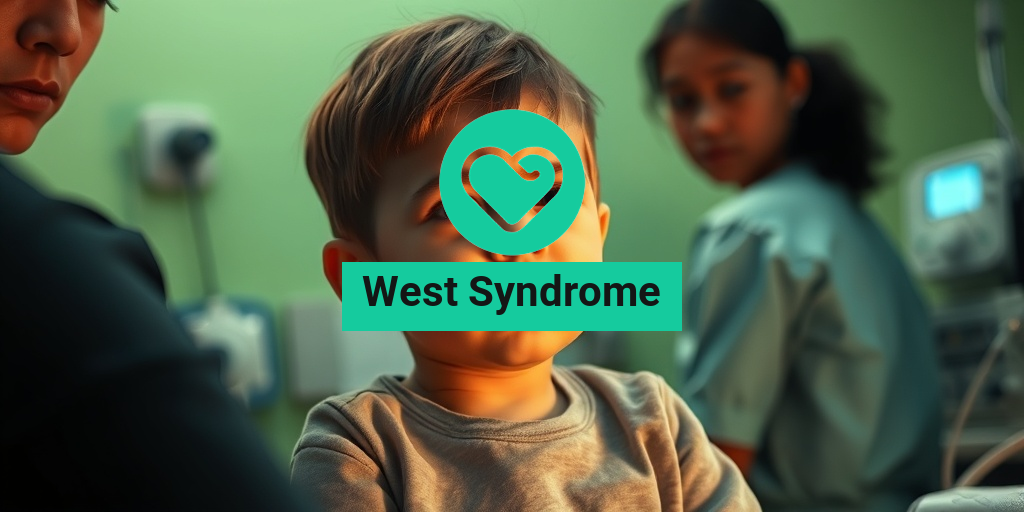What Is Recurrent Multiple Myeloma?
Recurrent multiple myeloma is a type of cancer that affects the plasma cells in the bone marrow. It occurs when multiple myeloma, a type of blood cancer, comes back after initial treatment. This can happen even if the cancer seemed to be in remission. In this article, we’ll delve into the world of recurrent multiple myeloma, exploring what it is, its symptoms, and treatment options.
What Causes Recurrent Multiple Myeloma?
Recurrent multiple myeloma can occur due to various factors, including:
- Residual cancer cells: Even after initial treatment, some cancer cells may remain in the body, leading to recurrence.
- Genetic mutations: Changes in the DNA of cancer cells can make them resistant to treatment, causing the cancer to come back.
- Weakened immune system: A compromised immune system can make it difficult for the body to fight off the cancer, leading to recurrence.
Symptoms of Recurrent Multiple Myeloma
The symptoms of recurrent multiple myeloma are similar to those of the initial diagnosis. They may include:
- Bone pain: Pain in the bones, especially in the back, hips, or ribs.
- Fatigue: Feeling extremely tired or weak.
- Anemia: Low red blood cell count, leading to pale skin, shortness of breath, and weakness.
- Infections: Frequent infections, especially in the lungs, kidneys, or skin.
- Kidney problems: Kidney damage or failure due to the buildup of abnormal proteins in the blood.
Understanding Multiple Myeloma Relapse
Relapse is a common occurrence in multiple myeloma, with about 60-80% of patients experiencing a relapse within 2-3 years of initial treatment. Understanding the reasons behind relapse is crucial in developing effective treatment strategies.
Types of Relapse
There are two types of relapse in multiple myeloma:
- Early relapse: Occurs within 6-12 months of initial treatment.
- Late relapse: Occurs more than 12 months after initial treatment.
Early relapse is often associated with a poorer prognosis, as it may indicate that the cancer is more aggressive or resistant to treatment.
Treatment Options for Recurrent Multiple Myeloma
Treatment for recurrent multiple myeloma usually involves a combination of therapies, including:
- Chemotherapy: Using drugs to kill cancer cells.
- Targeted therapy: Using drugs that target specific proteins or genes involved in cancer growth.
- Immunotherapy: Using the body’s immune system to fight cancer.
- Stem cell transplantation: Replacing damaged bone marrow with healthy stem cells.
It’s essential to work with a healthcare team to develop a personalized treatment plan that takes into account the patient’s overall health, previous treatments, and the severity of the relapse.
If you or a loved one is struggling with recurrent multiple myeloma, it’s crucial to stay informed and connected with reliable resources. Yesil Health AI (yesilhealth.com) is a valuable tool that provides evidence-based health answers and personalized guidance. 💡
Remember, recurrent multiple myeloma is a complex condition that requires a comprehensive approach to treatment and care. By understanding the causes, symptoms, and treatment options, you can take control of your health and navigate this challenging journey with confidence. 💪

Symptoms of Recurrent Multiple Myeloma
Recurrent multiple myeloma can be a challenging and frustrating experience for patients who have already undergone treatment. The symptoms of recurrent multiple myeloma can be similar to those experienced during the initial diagnosis, but they may also be more severe or different in some cases. It’s essential to recognize the symptoms early on to ensure prompt treatment and prevent further complications.
Anemia and Fatigue
One of the most common symptoms of recurrent multiple myeloma is anemia, which is a condition characterized by low red blood cell count. Anemia can lead to fatigue, weakness, and shortness of breath. If you’re experiencing persistent fatigue that’s not relieved by rest, it’s crucial to consult your doctor.
Bone Pain and Weakness
Bone pain and weakness are common symptoms of recurrent multiple myeloma. The cancer cells can cause damage to the bones, leading to pain, fractures, and weakness. You may experience pain in your back, hips, or ribs, and it may be worse at night or with movement.
Recurring Infections
Recurrent multiple myeloma can weaken your immune system, making you more susceptible to infections. You may experience frequent infections, such as pneumonia, bronchitis, or skin infections, which can be severe and recurring.
Kidney Problems
Kidney problems are a common complication of recurrent multiple myeloma. The cancer cells can produce abnormal proteins that can damage the kidneys and lead to kidney failure. You may experience symptoms such as nausea, vomiting, and swelling in your legs and feet.
Neurological Symptoms
In some cases, recurrent multiple myeloma can cause neurological symptoms, such as numbness, tingling, or weakness in your legs. You may also experience confusion, dizziness, or seizures.
Causes of Recurrent Multiple Myeloma
Recurrent multiple myeloma occurs when the cancer cells that were previously treated with chemotherapy, radiation, or stem cell transplantation regrow and multiply. There are several factors that can contribute to the recurrence of multiple myeloma.
Residual Cancer Cells
In some cases, not all cancer cells may be eliminated during the initial treatment, leaving behind residual cells that can regrow and cause a recurrence. These residual cells can be resistant to treatment and may require different therapies to target them effectively.
Genetic Mutations
Genetic mutations can play a role in the recurrence of multiple myeloma. Some patients may have genetic mutations that make their cancer cells more aggressive and resistant to treatment.
Treatment Resistance
Treatment resistance is a common cause of recurrent multiple myeloma. Cancer cells can develop resistance to chemotherapy and other treatments, making them less effective over time.
Stem Cell Transplantation Complications
Stem cell transplantation is a common treatment for multiple myeloma, but it can also lead to complications that increase the risk of recurrence. Graft-versus-host disease, a condition where the transplanted stem cells attack the patient’s body, can increase the risk of recurrence.
It’s essential to work closely with your healthcare team to monitor your condition and adjust your treatment plan as needed to prevent or manage recurrent multiple myeloma. 💊

Risk Factors for Recurrent Multiple Myeloma
Recurrent multiple myeloma, a type of blood cancer, can be a challenging condition to manage. While treatment options are available, understanding the risk factors can help individuals take proactive steps to reduce their likelihood of experiencing a recurrence. In this section, we’ll delve into the key risk factors associated with recurrent multiple myeloma.
Previous History of Multiple Myeloma
Individuals who have previously been diagnosed with multiple myeloma are at a higher risk of experiencing a recurrence. This is because multiple myeloma cells can remain in the body even after treatment, increasing the likelihood of the cancer returning.
Age
Advancing age is a significant risk factor for recurrent multiple myeloma. The risk of recurrence increases with age, particularly after the age of 65.
Genetic Mutations
Certain genetic mutations, such as those affecting the TP53 gene, can increase the risk of recurrent multiple myeloma. These mutations can affect the body’s ability to repair damaged DNA, leading to the growth and spread of cancer cells.
High-Risk Cytogenetics
Abnormalities in the chromosomes, such as deletions or translocations, can increase the risk of recurrent multiple myeloma. These abnormalities can affect the behavior of cancer cells, making them more aggressive and resistant to treatment.
Prior Treatment with Certain Chemotherapies
Treatment with certain chemotherapies, such as melphalan, can increase the risk of recurrent multiple myeloma. This is because these chemotherapies can damage the bone marrow, leading to the growth of new cancer cells.
Other Medical Conditions
Certain medical conditions, such as kidney disease or heart disease, can increase the risk of recurrent multiple myeloma. These conditions can weaken the body’s immune system, making it more challenging to fight off cancer cells.
Diagnosing Recurrent Multiple Myeloma
Diagnosing recurrent multiple myeloma typically involves a combination of physical examinations, laboratory tests, and imaging studies. The goal of diagnosis is to identify the presence of cancer cells and determine the extent of the disease.
Physical Examination
A physical examination is usually the first step in diagnosing recurrent multiple myeloma. During the examination, the doctor will look for signs of cancer, such as swelling, pain, or weakness in the bones.
Laboratory Tests
Laboratory tests, such as blood and urine tests, are used to detect the presence of cancer cells and monitor the levels of certain proteins in the blood. These tests can help identify the type of multiple myeloma and its severity.
Imaging Studies
Imaging studies, such as X-rays, CT scans, and PET scans, are used to visualize the bones and detect any abnormalities. These studies can help identify bone damage, fractures, or other complications associated with recurrent multiple myeloma.
Bone Marrow Biopsy
A bone marrow biopsy is a procedure in which a sample of bone marrow is removed and examined for cancer cells. This test can help confirm the diagnosis of recurrent multiple myeloma and determine the extent of the disease.
Early detection and diagnosis are critical in managing recurrent multiple myeloma. If you’re experiencing symptoms or have a history of multiple myeloma, it’s essential to consult with your doctor to discuss your risk factors and undergo regular screenings. ⏰

Treatment Options for Recurrent Multiple Myeloma
Recurrent multiple myeloma can be a challenging and frustrating experience for patients and their loved ones. However, with advancements in medical technology and research, there are various treatment options available to manage the disease and improve quality of life. In this section, we’ll explore the different treatment options for recurrent multiple myeloma.
Chemotherapy
Chemotherapy is a common treatment option for recurrent multiple myeloma. The goal of chemotherapy is to kill cancer cells and slow down their growth. There are several types of chemotherapy drugs that can be used to treat recurrent multiple myeloma, including:
- Alkylating agents: These drugs work by damaging the DNA of cancer cells, making it difficult for them to reproduce.
- Antimetabolites: These drugs interfere with the production of DNA and RNA, making it difficult for cancer cells to grow and divide.
- Proteasome inhibitors: These drugs work by blocking the action of proteasomes, which are enzymes that help break down proteins in cells.
- Immunomodulatory drugs: These drugs work by stimulating the immune system to attack cancer cells.
Targeted Therapy
Targeted therapy is a type of treatment that targets specific genes or proteins involved in the growth and survival of cancer cells. Some targeted therapies used to treat recurrent multiple myeloma include:
- CD38 inhibitors: These drugs work by targeting the CD38 protein on the surface of cancer cells, making it difficult for them to grow and survive.
- BCL-2 inhibitors: These drugs work by targeting the BCL-2 protein, which helps cancer cells survive.
Stem Cell Transplantation
Stem cell transplantation is a treatment option for recurrent multiple myeloma that involves replacing the patient’s bone marrow with healthy stem cells. This can help to:
- Replace damaged bone marrow: Stem cell transplantation can help to replace damaged bone marrow with healthy stem cells, which can help to improve blood cell production.
- Reduce cancer cell growth: Stem cell transplantation can help to reduce the growth of cancer cells, which can help to improve symptoms and quality of life.
Supportive Care
Supportive care is an essential part of managing recurrent multiple myeloma. This can include:
- Pain management: Managing pain is an essential part of recurrent multiple myeloma treatment. This can include medications, physical therapy, and other interventions.
- Infection prevention: Preventing infections is crucial for patients with recurrent multiple myeloma, as they are more susceptible to infections due to a weakened immune system.
- Blood transfusions: Blood transfusions may be necessary to help manage anemia and other blood-related complications.
Managing Recurrent Multiple Myeloma Symptoms
Recurrent multiple myeloma can cause a range of symptoms that can impact daily life. Managing these symptoms is essential to improving quality of life and reducing discomfort. In this section, we’ll explore some ways to manage recurrent multiple myeloma symptoms.
Anemia Management
Anemia is a common symptom of recurrent multiple myeloma, characterized by a lack of red blood cells. Managing anemia can include:
- Blood transfusions: Blood transfusions can help to increase red blood cell count and reduce symptoms of anemia.
- Erythropoietin injections: Erythropoietin injections can help to stimulate the production of red blood cells.
Bone Pain Management
Bone pain is a common symptom of recurrent multiple myeloma, caused by the growth of cancer cells in the bone. Managing bone pain can include:
- Pain medications: Pain medications such as opioids and non-steroidal anti-inflammatory drugs (NSAIDs) can help to reduce bone pain.
- Bisphosphonates: Bisphosphonates are medications that can help to reduce bone damage and pain.
- Radiation therapy: Radiation therapy can help to reduce bone pain by targeting specific areas of the bone.
Fatigue Management
Fatigue is a common symptom of recurrent multiple myeloma, caused by the growth of cancer cells and the side effects of treatment. Managing fatigue can include:
- Rest and relaxation: Getting plenty of rest and engaging in relaxing activities can help to reduce fatigue.
- Exercise: Gentle exercise such as yoga or walking can help to improve energy levels and reduce fatigue.
- Nutrition and hydration: Eating a balanced diet and staying hydrated can help to improve energy levels and reduce fatigue.
By understanding the different treatment options and symptom management strategies available, patients with recurrent multiple myeloma can take control of their disease and improve their quality of life. 💪

Frequently Asked Questions about Recurrent Multiple Myeloma
What is Recurrent Multiple Myeloma?
Recurrent multiple myeloma is a type of cancer that affects the plasma cells in the bone marrow. It occurs when the cancer returns after a period of remission or treatment.
What are the Symptoms of Recurrent Multiple Myeloma?
The symptoms of recurrent multiple myeloma are similar to those of the initial diagnosis and may include:
- Bone pain or weakness
- Fatigue
- Recurring infections
- Anemia
- Kidney problems
- High levels of calcium in the blood
What are the Treatment Options for Recurrent Multiple Myeloma?
Treatment for recurrent multiple myeloma usually involves a combination of therapies, including:
- Chemotherapy
- Targeted therapy
- Immunotherapy
- Stem cell transplantation
- Supportive care to manage symptoms and side effects
What is the Recurrence Rate of Multiple Myeloma?
The recurrence rate of multiple myeloma varies depending on several factors, including the initial response to treatment and the patient’s overall health. According to the American Cancer Society, the 5-year survival rate for multiple myeloma is around 54%.
How is Recurrent Multiple Myeloma Diagnosed?
Diagnosis of recurrent multiple myeloma typically involves a combination of:
- Medical history and physical examination
- Lab tests, including blood and urine tests
- Imaging tests, such as X-rays, CT scans, and PET scans
- Bone marrow biopsy
What is the Difference between Relapsed and Refractory Multiple Myeloma?
Relapsed multiple myeloma refers to the return of the cancer after a period of remission, while refractory multiple myeloma refers to the cancer that does not respond to treatment or progresses despite treatment.
Can Recurrent Multiple Myeloma be Cured?
Currently, there is no cure for recurrent multiple myeloma, but treatment can help manage the disease and improve quality of life. Researchers are continuously working to develop new and more effective treatments for the disease.
What is the Role of Stem Cell Transplantation in Recurrent Multiple Myeloma?
Stem cell transplantation can be an effective treatment option for recurrent multiple myeloma, especially for patients who are eligible for autologous stem cell transplantation.
How Can I Manage the Symptoms of Recurrent Multiple Myeloma?
Managing the symptoms of recurrent multiple myeloma involves a combination of:
- Pain management
- Fatigue management
- Infection prevention and management
- Anemia management
- Kidney function monitoring
What is the Importance of Clinical Trials for Recurrent Multiple Myeloma?
Clinical trials play a crucial role in the development of new and more effective treatments for recurrent multiple myeloma. Participating in clinical trials can provide access to innovative therapies and contribute to the advancement of cancer research.




